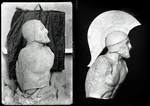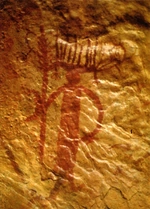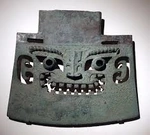Length, Distance And Why The Physics

This article will dive into the main aspects of distance and length. Here, we will attempt to review length through its geographical—and, by extension, cultural—significance for human societies, both in modern times and from a historical perspective.
And our internal voice hints that we cannot avoid, in our considerations, such questions as why length as a subject should be understood as a physical unit, rather than simply a geometric operational element. Only a detailed consideration of space and baryonic matter will help us uncover the depth of this approach. Therefore, we recommend that our users remain patient in such cases, when our narrative may appear somewhat lateral to the main topic of the article. Of course, no penalties will be imposed on readers who skip some paragraphs, but careful readers will ultimately reap the significant rewards of a clearer understanding of the fundamental principles we outlined below...
But in the introduction, we have found it necessary to offer a little “candy,” so that the reader may continue to glance through the otherwise rigorous and scholarly content… Isn’t that so?
Here, below, along with other nuances of the contextual inclusions, you will find detailed descriptions of the length and area units of the main cultures famously known to date. This includes the units of Ancient and Medieval China, the Indian metric system, Greece, Rome, early European length units, as well as the approaches to distance measurement in Slavic territories, as recorded in old historical tomes—sometimes even more legendary than what archaeological evidence has preserved to our time...
Without Space No Lengths, And There Only Nothing...
About Words, And Their Values

We already mentioned the 'baryonic' word in our preface paragraph, and may be here the place to define what is this and with what to eat it?
Briefly, as you may have heard from some scientific broadcasters, the universe — to which we have a certain observational relationship — consists of several kinds of matter. Cosmology and particle physics describe elementary particles as having wave–particle duality, meaning their structure is fundamentally wave-based. Only matter with compatible wave structures can interact or detect these elements, providing information about the existence of objects we seek to observe. This type of detectable matter corresponds to baryonic matter, the ordinary matter that forms stars, planets, and living beings.
We here will intentionally skip so-called dark matter and dark energy, which still occupy a place in scientific discussion clubs. But what about space? What beast might we classify it as?
Like any creature with a relatively high ability to move, we are vitally dependent on the perception of our environment — the surroundings that help us recognize the territory we occupy, identify targets we may approach, and gauge the distances we need to overcome for activities essential to our survival. All of this is depicted before continuing in the dedicated space. This space is so ordinary for us that we rarely think of it in terms of its physical properties; instead, all other objects — air, earth, stones, and everything we can manipulate or interact with — are matter for us.
And here we are closely approaching the definition of the distance. Mainly, as we noted above, our operational element for environmental relationships is the distance. But distance is only our representation of the space fraction for simplification to applicable units within the space. And if space itself is not a constant value, for us the distance will still be constant. Else all the coordinate systems and reference points will completely destroy our adaptability, which in its turn strictly depends on patterns shaped during the lifespan of the life owner...
Based on recent astrophysical observations, the space within our observable horizon is not constant. Intuitively, we might suggest that distance is tightly linked to the volatile fringe at the visible “end of the universe.” Yet we still rely on standardized patterns in our measurements, and to our perceptions, all of this appears static and unchanging. This raises an important question: is distance truly constant, or is it constant only in terms of our measurements and perception?
Nevertheless, space and distance are of the same nature. The difference between them lies mainly in perspective: distance is an artificial construct, invented and applied by humanity, while space is a physical reality. And distance is only the tool (from the set of them) applied by humanity in its ridiculous efforts to grasp the universe.
Mr. Obviousness, Or Thoughts About Everyday Life

Let's do a simple restoration of a common day chain of events, as truly detectives do. Now it is 12 o'clock in the afternoon, the first of December, 1972 (or 3072, which actually will not be important in the simple case of existing humanity as a biological species). I slept well and woke in excellent mood. By standing up from the bed, I palped with my right leg a slipper, as I exactly leave the slippers in the centre and under the edge of the bed. So, in this simple fragment, we may notice several interesting facts, about which we rarely even try to think.
Waking up is the process where we are returning from another stage of our consciousness to awareness of where we are physically and what is going on. Then, into the scene comes out our memory processing mechanism, which leads to the restoration of long-range associative objectal-oriented patterns, such as bed, slippers, positioning, room, all objects’ purposes. And the third mechanism is responsible for the physical interactions with third-party objects and the mobility of our own body.
Related to our own body (which is a very notable element of the system), we unconsciously use the tool as a set of receptors to probe and respond to the probes of any actions we do, based on the mentioned above memory-patternal system. And when we remember that we palped the slipper with our right leg, it means we know where approximately our body is placed now; by this awareness, we take a fulcrum point, moving, revolving our body so as to let our leg manipulate in the space and coordinate the leg to palp the slipper. And we know how to manipulate our tool (leg) because we exactly know our leg’s act parameters in the space. From now, these parameters will be the starting position of unconscious distance measurements.
Then I walk to the bathroom to visit my old friend, the night vase — hurry up, if I want my underwear to be dry. Timing... How do I know how much time the trip to the bathroom will take, to open the door, and all complex activities I need to do to arrive in time to the desirable device, which as a result helps me save my underwear from becoming a wet rag? Let's reconstruct the chain of events we do unconsciously to obtain a desirable result.
When we stood up, put on slippers, rushed to the bathroom door (there should be several steps), and exactly knew where to stop and which leg should set the required position to conveniently straighten the arm, push the door handle, open the door. There is our awareness of all our body parameters. From our life experience, we knew about the average distance of a step we take, and depending on the required actions, we manipulate the step lengths. So the basic parameter is our patternal mechanisms recalculating the lengths of legs to preconstruct the required step length. When I stop and straighten the arm, our patternal mechanism, the same way as with the step situation, preconstructs the parameters of my hand.
From these examples, we may make some derivations about how we orient within the space by algorithms designed for us in evolutionary processes. So here we may trace even the natural approach of standardisation of dedicated objects and the implementation of these standards into the environmental reality.
Distances, And Measurements In Human Implementation
Preface, Or Why Standardisation Valuable

As widely known, communication between social creatures is critically important for their survival strategy. And the main purpose is only the survival of the individual. This is an evolutionary axiom we will not discuss here. However, the authors found some facts in the preface necessary to proclaim.
From entomologists, we know facts about bees’ dances, which serve as a part of information exchange (or sharing important data) about the location of prospering edible flowers. This dance ritual involves flying from side to side, with hanging points, and each movement conveys information about the direction the bee should fly, the duration of flight to the required location, and basic information about the type of source, as indicated by the dancer through this dance.
In the provided example (link to the source, see 'Bees communication – See more' below the paragraph), you may notice that the dance itself has parts that can be interpreted as standardized elements — timing of hanging, directional movements, etc. The fact that the colony society understands this data leads us to conclude that such behavior is absolutely unavoidable among social creatures.
Similarly, within human social life, distance, directions, and many other orientational elements emerge once a commune is established. We suggest that only humanity has such a communication tool as language, and this is our general advantage that differentiates humanity from all other biological species (let’s leave utterance aside for the current topic). This observation leads to the reasonable outcome that we can always organize all important and socially valuable matters.
So, taking into account the above narrative, we may go ahead and dive into observations of the ways and methods by which humanity arranges distances and their measurements across cultures, and from a historical perspective, in order to grasp the full picture of the topic we are assembling here to explore...
Bees communication – See moreUnknown And Undefined, But Humanity Belongs
Did You Ever Heard About The Ishango Bone, Or What About 20000 BC Date?

In 1950, Belgian geologist and anthropologist Jean de Heinzelin de Braucourt unearthed the Ishango Bone during excavations near the Semliki River, close to Lake Edward, on the border between modern-day Uganda and the Democratic Republic of the Congo. The bone is approximately 10 cm in length and is believed to be a fibula from a baboon or another large mammal. It is housed at the Royal Belgian Institute of Natural Sciences in Brussels, Belgium.
The Ishango Bone has been the subject of extensive research, leading to various interpretations. Some researchers suggest that the notches on the bone represent early arithmetic operations, possibly indicating knowledge of prime numbers and basic arithmetic functions. Microscopic examinations have led to the hypothesis that the notches may correspond to a lunar calendar, potentially used for tracking lunar phases. Other studies propose that the notches reflect a base-12 counting system, with sub-bases of 3 and 4, suggesting a complex numerical understanding. A 2025 study identified structural patterns in the notches, revealing repeating sums and dualistic pairing structures, indicating a deliberate and complex mathematical arrangement. The Ishango Bone is considered one of the oldest known mathematical artifacts, providing insight into the cognitive and cultural practices of prehistoric societies. Its study continues to offer valuable perspectives on early human numeracy and symbolic thinking.
Assuming the excavated artifact, we can only speculate about its direct use, but the marks and the logic of its positional structure suggest that some form of relative metrical standardisation should reasonably be considered among all other suggestions...
More about The Ishango Bone, see here, (pdf document)Further, we will lead our honorable reader through the chain of the main well-known ancient cultures, and will provide the generalizations just before we leap into the medieval period of length standardisation...
This article is part of a long-read publication. [Go to the full version →]







This chapter devoted to two cultures, Babylonia and Persia, and here uncover why...

And here the place we should turning backward, to culture, already passed but under other angle...






